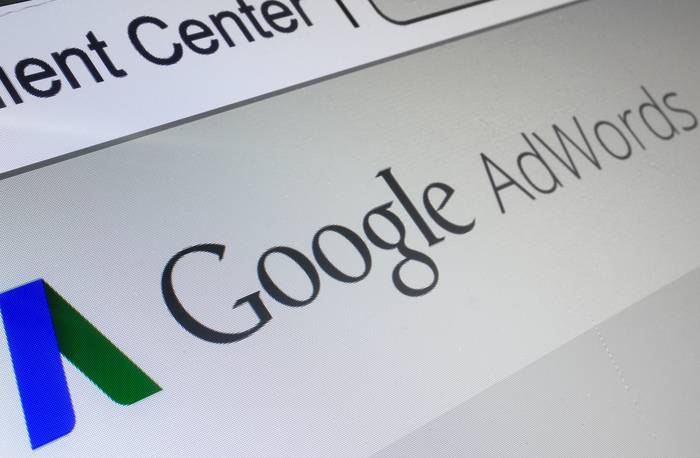PPC Trends for 2020
Greater reliance on automation and machine learning...To an extent
Ever since Google rolled out automated bidding strategies back in 2013, PPC teams across the country have been a little fearful of how the growth in automation could affect our ‘usefulness’ as marketers. 2019 has seen even more automation introduced into the Google Ads family, with the rise of smart display and shopping campaigns, the growth of responsive search ads and the addition of even more bidding strategies such as target conversion value.
2020 will no doubt bring even greater change, but don’t sack your PPC team just yet! There’s only so much automation can do. A computer can’t strategise on a great campaign idea, can’t write compelling and tonally accurate ad copy and, let’s face it, Google’s primary goal tends to be to make money for itself, not deliver excellent results for the lowest price.
In fact we at Extreme have seen mixed results when testing many of these features, with results often spiking to lure you into a false sense of security before appearing to regress. Although automation and machine learning can be exciting to try, and are increasingly difficult to ignore; the human touch is definitely still required going into 2020 and beyond!
Increase Use of Video Ads Across Channels
The use of video in a brand’s marketing strategy allows them to connect with their audience in a unique way, whilst showcasing personality and telling a story. Studies show that 54% of consumers want to see more video content from a brand or business they support (Hubspot 2018). Consumers find products easier to relate to if they are able to visualise it through video and we don’t expect this trend to slow down.
Although the use of video in brand’s marketing strategies isn’t new, it has often been expensive due to production costs and many don’t have the marketing budget for this. As technology advances we are seeing it become easier to create high-quality video through the use of smartphone cameras which include video editing software. This gives brands the opportunity to create engaging content at a cheaper cost and engage with their target audience.
In the past we have seen YouTube as the essential video advertising platform but with other channels such as Snapchat, LinkedIn and features on Instagram such as IGTV being used in brand’s advertising strategies, businesses should consider these as a means of reaching their consumers. Partnering improved technology with the accessibility of new advertising potential, the use of video in your marketing strategy is here to stay.
Greater detail in attribution modelling - Beta currently out now
Providing a detailed overview of what channels, campaigns, sources and mediums contributed most to the success of your marketing is getting increasingly more important. With this becoming an even harder task, it’s important greater attribution modeling comes into play, this is where Google’s new Attribution Beta comes into the picture!
The new Beta has a higher importance on customers’ tracking conversions, those who want to move on from the traditional (and default) last-click model.
There are 3 new main features:
- A Single Project Based UI - For analytics across multiple properties and conversions.
- Data-driven attribution models - Previously exclusive to GA 360 customers, which is very expensive.
- New style of Attribution reports - Conversion paths, lag, length and then model comparison
As the new models provide a much higher level of information, once you set your projects up you’ll have to wait a minimum of 72 hours before being able to see any information. However, once it’s there you’ll be able to see things in a much clearer fashion, such as Organic having 33% attribution in a conversion, Direct having 0% and PPC having 67%. In the previous default setup, if PPC was the last touch-point, that would be attributed the full 100%. This gives you a much clearer overview of just how much input each channel is having on a customer journey and inform resource division.
SEO Trends for 2020
Zero Click Searches
We predict a continued growth of zero clicks searches next year, with more and more queries answered directly in the search results. Currently 48.96% of queries in the US are zero click searches. This means SEOs will need to determine whether they can still benefit from ranking for these queries even without the traffic and focus on optimising more comprehensive content that cannot be fully displayed in featured snippets, such as lists, guides and tutorials.
E-A-T Up
Following the introduction of E-A-T, Google’s new algorithm in August 2018, we will continue to see greater emphasis on improving content accuracy and growing trust singles in order to establish your brand as an authority. Google is trying to protect its readers from low quality or inaccurate content, so ensuring your output meets their higher standards is paramount for ranking highly. The good news is, that whilst it may be more difficult to climb the rankings, once you get up there it will be harder to be knocked off again.
Q&As
If it isn't already, answering searcher intent should be your number one priority when creating content. We've seen Google make huge advances in answering more nuanced queries and building more sophisticated language processing models to do so and this is set to continue in 2020.
Looking Back...
In 2020 it will become harder to make historical data comparisons due to ongoing cookie changes, with an increasing amount of traffic classified as direct. To combat this, we advise that you use the attribution model to preview how this currently looks and how it will continue to look with more changes.
Technical Marketing Trends for 2020
Behavioural marketing
We have really been pushing behavioural marketing this year here at Extreme. Marketers shouldn't be assuming anything about their customers, but instead, delivering tailored, relevant content to each individual customer through intelligent workflows. Get to know your customers; 2020 is about making marketing much more personal. Our friends at Drip said this and we couldn’t put it better if we tried…
“You win with intimacy. Your customers shop with you, specifically, because they seek a smarter, more tailor-made hands-on experience.”
New Networks
Gone are the days of focusing purely on your st Tier platforms. Customers are everywhere, and it's our job to identify where, then implement that into the relevant phase of your marketing strategy. This includes forum-based platforms such as Quora and Reddit which are a feeding ground for conversational marketing and engagement, and are especially useful for guiding content that addresses any questions or concerns surrounding a specific topic.
Holistic Strategies
Something everyone knows they should do, but often don't. Thinking about the customer journey and all the individual facets of each phase is more important than ever, to ensure you remain engaged with your customer, and them with you. This is particularly important in brands that have value and often lengthy customer journeys, you need to know what and how you're saying and to who, at each given stage. This ties in heavily with Behavioural Marketing, but includes combining online with offline too.
PR and Content Trends for 2020
Importance of earned media
Essentially, earned media is when someone else shares or distributes content on your behalf. This can be through various mediums including press coverage, blog mentions and social media posts. Moving into 2020, it will be more important than ever for brands to utilise earned media, with 72% of consumers waiting to purchase until they’ve read reviews before taking action, and are more likely to trust messages about your brand coming from those they connect with over a traditional hard sell. As a result, marketers must ensure their social media and PR strategies are aligned to maximise third party involvement and build a network of brand ambassadors and a positive brand reputation.
Data-led content
With link building becoming more reliant on SEO and PR teams collaborating, data-led content is crucial for building relationships and trust from both a search engine and client side. Through analytical insight, SEO teams are able to guide content writers with relevant search terms for varying target audiences and mapping appropriate channels to reach them.
Time and resources are much better spent writing relevant and informed content to specifically reach those you’re trying to connect with, so in 2020 make sure you unite the efforts of each specialty to create stronger and better quality content that will effectively land with your consumers.
Voice-activated Content
Canalys forecasts the number of smart speakers’ installed globally was on track to top 200 million by the end of 2019, suggesting a voice content strategy is no longer optional, it is a necessity. With more and more homes taking advantage of home assistants like Alexa or Google Home and many using smartphones daily, voice-activated content should be created with user intent at the heart - be the solution for what they are asking.
Though voice search continues to grow, and is important to consider when creating content, it is also necessary to look at how suitable it is for a specific brand or client. For example, booking a holiday usually involves varying levels of research by consumers, where imagery plays a major role in the marketing as people like to see what they are getting for their money; and so voice search may not be as useful when considering how to best spend resources in such cases, and a more visually focused informed piece of content would be a better fit.
Social Media Trends for 2020
Organic influencers are on the rise
Influencer marketing will continue to grow through 2020, but there will be a shift in influencer culture, driven largely by lack of trust. This year will see a move away from big paid influencer partnerships thanks to recent high-profile scandals throughout 2019, issues with fake likes and the recent change in the visibility of instagram likes. There will be more of a focus on people who are already talking about or using the products, leading to more authentic User Generated Content created by 'real' people.
According to the Edelman Trust Barometer (2019), “influencer relatability is twice as important as popularity when it comes to product endorsements,” (ThinkForward_2020 report). To address the issue of likes being removed as well as a need to share engagement stats, Steven Bartlett announced on a LinkedIn post that Instagram is launching a new dashboard to help influencers find and manage brand relationships. We’ll keep you posted on how this will shape communications with brand ambassadors and the selection process of key influencers that will reach the relevant audiences.
Communities
The new decade is the time to shift your thinking from simply targeting by demographics (age, location, gender) and think more community based, identifying groups to associate your brand with. Look at your audiences with a more holistic view of the individuals within, identifying their passion points, what they don't like and where your brand or service can fit into their daily moments and milestones - this will create stronger customer relationships and build brand advocacy.
Privacy - keep out!
We touched on this in last year's predictions blog post, but dark social continues to rise and conversations are increasingly moving to private social spaces, people preferring private chats through Whatsapp, Messenger and Direct Messages to connect with others. Expect to see platforms continue to shape themselves around the user's desire for more personalised and private interactions (goodbye feeds?), with Instagram and Facebook focusing on their stories feature. Speaking of stories, one of the biggest privacy related social media scandals in 2019 saw Coleen Rooney infamously call out 'It was Rebekah Vardy' for allegedly sharing her private photos, caught out using Instagram's story feature!
Increased investment - ads are adding up
Ads and influencer partnerships will cost brands more money throughout 2020, though businesses are now utilising more channels for paid advertising outside of Facebook. LinkedIn has developed its Ad options throughout 2019, adding features such as lookalike audiences, which opens up more options and possibilities for marketers. This should be a key tool for B2B, but also has B2C value. Not only are other channels expanding their ads offer, but Facebook Ads may also become more expensive in 2020. This will encourage us to look at ways to reduce ad fatigue by refreshing copy and creative, resulting in a need for more innovative ways to grasp attention and testing new audience targeting.
The end of Awareness Day marketing?
2020 is the time to identify more niche awareness days to connect your brand to. Brands are seeing less engagement on generic Awareness Day content, as popular ones can be flooded by brands on social channels. It’s important to make your social content stand out in a room full of noise, so whilst it’s good to tap into popular trends, try to remain true to your brand values and retain originality. A great example of this comes from the Twitter account of National Geographic, who ‘live-tweeted’ the Apollo 11 mission 50 years later, providing insight into the events of one of the greatest accomplishments in human history. Talk about taking things to new heights!
Create content like a consumer - a message from Rachael Samuels, Manager, Social Media,Sprout Social
"If the last few years has taught us anything it’s that the social landscape is becoming more saturated, especially as brands strive to differentiate themselves from the rest. As algorithms continue to favor posts by friends and family and vanity metrics start to disappear, brands will need to put a concerted effort towards creating content like a consumer so that audiences can easily see themselves represented in their products and services.
“Influencers, who play a pivotal role in bridging the gap between brands and consumers, are great sources of inspiration for this. As consumers themselves, they have mastered the art of creating content that is engaging and feels like a natural fit in their audiences feeds. In 2020, brand marketers should be taking a similar approach, drawing on their own social experiences to inform their strategy.
“Towards the end of 2019, we’ve seen an uptake in people using features such as polls, Q&As and live video to interact with their friends and family, which is why it isn't surprising that 39% of consumers in the UK and Ireland highlight wanting brands to leverage more AMAs, Q&A tools and UGC. These are familiar to people’s own personal experiences, and when brands create content that is human, transparent, and empathetic they will be able to move their social strategies forward.”
The rise of TikTok
Mentioned a lot at Social Media Week 2019 and dubbed as the 'less polished Insta', the new short-form video platform is all about interests and discovery rather than who you follow. Viral videos work well here, such as the shoe challenge by Holly H, with some creators prioritising TikTok because they can be more creative than on other platforms. Brands looking to collaborate should work directly with creators for high-impact and high-energy content. However, with rival social channel Instagram recently launching tools in Brazil very similar to TikTok, we can expect to see the battle between the two continue throughout 2020.
Reality check - the growth of AR/VR
Augmented Reality and Virtual Reality are set to continue to grow in popularity over the next year. Brands can use them to create social experiences, and even pre-experiences, for users meaning customers can ‘try before they buy’, giving them an idea of what they’re buying when looking at purchasing something, like a new outfit, home interiors or even a holiday.
An example of a simple but effective use of AR in 2019 comes from Starbucks, who launched four winter-themed cups that came to life with AR, which customers could then share on their Instagram. Creating an AR/VR experience for your customers to share on social is a great way to add value to your product or service in their eyes while at the same time increasing brand visibility, without the higher cost of more traditional advertising methods.
Increased support of mental health and social wellness
Controversially, the end of 2019 saw Instagram hide their 'likes' feature, with many praising it as a step towards improved mental health for users, removing a potential dependency on validation that publicly displayed likes provided. Though, as mentioned earlier it may have more to do with their new ‘Influencer Dashboard’ launching. Either way, ultimately it will hopefully help those who may define their success or happiness by the number of likes they get, and encourage them to seek self acceptance.
There is also an increasing focus on digital detoxes which is set to continue, and so brands will need to be mindful of this and ensure their content counts for something with their consumers in 2020, perhaps adopting a quality over quantity approach.
Development Trends for 2020
Mobile Optimised Applications
- Accelerated Mobile Pages (AMP)
- Progressive Web Apps (PWA)
The use of mobile devices has continued to rise, changing the traditional idea of consumers researching on their mobile or tablet before completing transaction on their laptop or desktop computers. 79% of smartphone users (and there are 4.3 billion in total) have made a purchase through their mobile device in the last six months, so making sure they can access content quickly and easily is key to getting them to engage with your brand.
Accelerated Mobile Pages and Progressive Web Apps provide the consumer an optimised version of your website or e-commerce store that can function like a native application whilst being lightening quick and can handle poor connection speeds and offline content.
Of course with the introduction of 5G to the UK we’ll see massive changes coming to the mobile internet as applications can take advantage of faster speeds and better network infrastructure.
Machine learning
- Chatbots for customer service
- Personalisation
With Amazon and Google providing easy and economical access to powerful
machine learning tools, there has never been a better time to think about how machine learning can be leveraged to support your customers. Using previous customer data to deliver optimised or personal experiences to customers can increase conversions, and offering speedy automated help to problems through chatbots can make your brand accessible 24/7.
Static websites & Headless CMS’
With a focus on performance, static sites have been making a resurgence over the last few years. Whilst they’ve progressed from the standard HTML pages from the early years of the Internet, the principle is still the same.
Software such as Gatsby, Jekyll and Hugo take a data source containing the website content, which can be static files or a Headless CMS, and generate HTML files that can be delivered to a user’s browser very quickly. For those who want to retain control of the website content, changes made within the CMS trigger new or updated pages to be built and deployed automatically.
Although only appropriate for content or brochure websites, building a website in this way can be quicker than working with a traditional CMS and save money on hosting architecture due to the simplified nature of the software required to serve the site.
Search
- Voice optimisation
- Improved on site text search
As mentioned previously, with more and more homes taking advantage of Home Assistants like Alexa or Google Home and many using smartphones daily, voice search is becoming more prevalent and making sure your site is optimised for voice is important for rankings. By understanding how people use voice search, your site content can be tailored and included structured data in the markup to deliver the correct content to users.
As most voice searches are performed on mobile, it is of course important that your website is optimised for mobile - tying in nicely with PWA and AMP mobile optimisation.
In site search will also see continued improvements with services like Algolia and ElasticSearch providing affordable and performant search indexes that can be embedded into your website with ease. As these services are provided as SaaS platforms you have access to tools to rank and apply rules to search results, meaning it’s possible to provide customers with accurate indexes of your products or content.
Need help developing a marketing strategy that addresses these 2020 trends?
Get in touchPost by

Lucie is our lead on all paid media activity, overseeing our talented paid media team and managing the strategy and implementation of all paid search campaigns across multiple platforms. Fully Google qualified and working directly at Google prior to joining Extreme, there's not much Lucie doesn't know about PPC!
Project
Post by

Our SEO Lead with over 15 years’ experience, James calls on an extensive knowledge of search and works closely with our content team to deliver targeted, results-driven SEO strategies.
Project
Post by

Extreme's resident Instagram queen, Beth lives and breathes all things social media! After graduating with a degree in Advertising, she explored all aspects of the digital world before firmly finding her feet in the land of social. Day to day, you can find her brainstorming for campaigns, drafting up witty content and strategising to help clients soar on social.
Project
Post by

Having worked with a large range of web apps and technologies, Joe calls on many years' experience in website development. Whether working on an existing site or coding a new one, Joe's passion is in making application performance optimal.
Project









